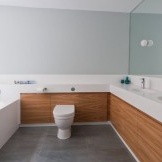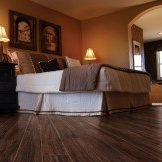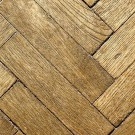Laminate Laying Technology
Today we’ll talk about how to lay down a laminate. So, you are faced with the task of improving the floor in your apartment and you decided to use laminated panels for this. This is the right decision, because the laminate is a fairly popular material today and in addition it has a lot of advantages compared to others floor coverings. First of all, it is a low cost, ease of installation, a wide range of colors and textures. Laminate always harmoniously fits into any interior.
Suppose you decide to lay laminate flooring in the bedroom. How to do everything right? Where to begin? Let's try to understand these and many other issues. This is not to say that laminate laying technology is a very complex and overwhelming process. If you follow all the recommendations, make efforts and be patient, then everything will work out. I immediately want to draw attention to such a moment that it will be very difficult for one person to lay a laminate, especially if there is no experience in this matter. Better when at least two will take up work.
Primarily…
The first thing is always determined with the color of the laminate, his class and quantity. One pack contains 10 boards, which are designed for two square meters. If your room is 12 square meters, then you will need 6 packs of material. But it is best to purchase building materials with a margin. So, buy not 6, but 7 packs of laminate. Before laying the laminate, a foundation should be prepared, and experts say that it is not necessary to make a screed or other similar procedures under the laminate. The main thing is that the floor does not have noticeable differences, mounds and depressions. Laminate can be laid on old linoleum or a wooden floor, if these coatings are even.
When laying laminate need such tools: a jigsaw or a saw, a small wooden board, a hammer, a pencil, a tape measure, a roll of substrate for the laminate.
Laminate Laying Technology
- So, the laminate boards are fastened together by the comb-groove principle. In other words, one board is inserted with a comb into the groove of the other board and pressed firmly.
- You can start laying the laminate on either side of the room. If you start laying perpendicular to the window, then the joints between the boards will not be visible.
- Having decided on the side, we proceed to laying the substrate. It is spread along the entire wall, and at first only one row, so as not to interfere with the installation of the laminate.
- Next, we take the laminate itself and lay out a strip of it along the wall, fastening the boards to each other with the end side. For a tight fit boards use a hammer. However, you cannot hammer directly on the laminate with a hammer, since you can break the comb. You need to take the board, put it on top of the comb and gently tap on it with a hammer. The end of the first board, to which the second one is attached, needs to be pressed firmly against the wall. But the main thing is not to overdo it, because the laminate can be easily damaged and then you will have to take a new one. Thus, we lay and adjust the trims along the entire wall. At the end, we saw off the board of the desired size.
- After the first strip is laid, it should be pressed firmly against the wall, after having first propped up on all sides with wedges (about 1 cm). For this, cut pieces are quite suitable.
- The second strip develops similarly, only you need to start the row with a piece that was sawn off from the last board of the first row. The third lane begins with a whole board, etc.
- After the entire second strip is laid, it must be carefully taken and inserted with a comb into the groove of the strip pressed against the wall. Press firmly and then lightly push on top. So you drive the ridges tightly into the grooves. This is the most difficult stage of all work on laying a laminate, so do not rush, be patient and everything will work out.
- If there are still gaps after strips between the strips, you need to take a hammer and a small bar and gently tapping along the entire strip to correct the flaws. Do not forget the wedges between the laminate and the wall. In order to get around obstacles such as sills, radiators, pipes, you need a jigsaw.
Have a good repair!








